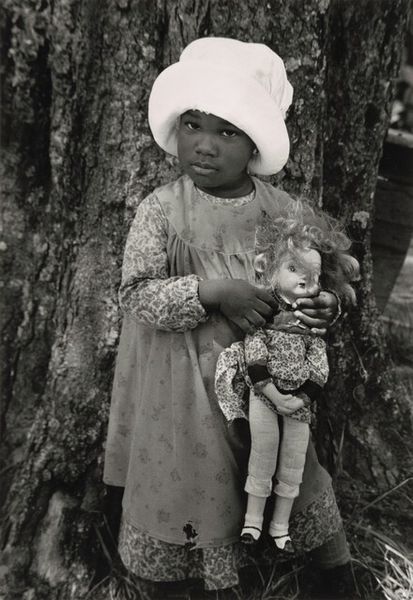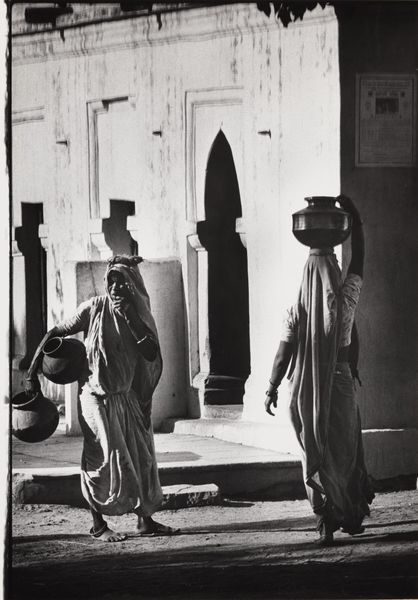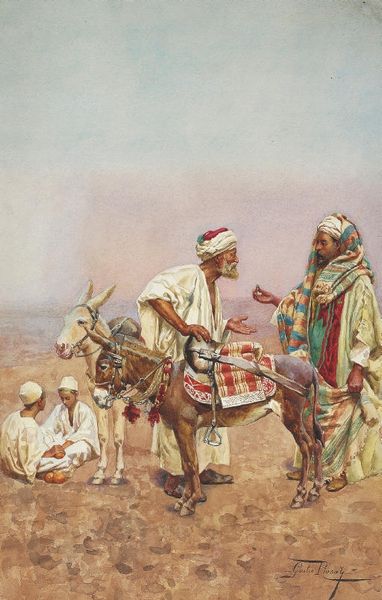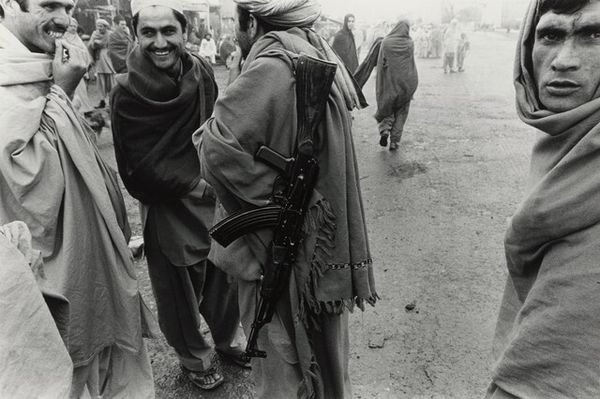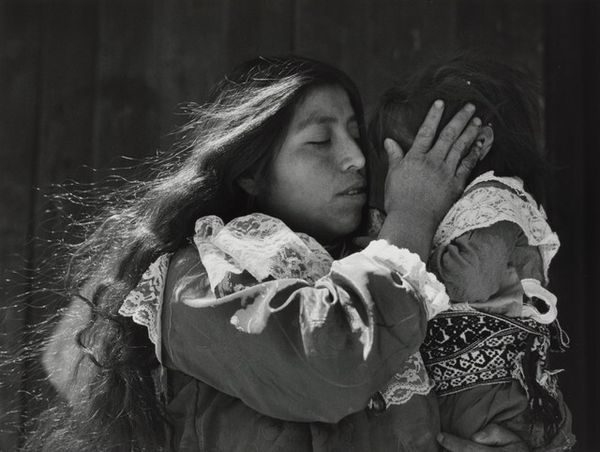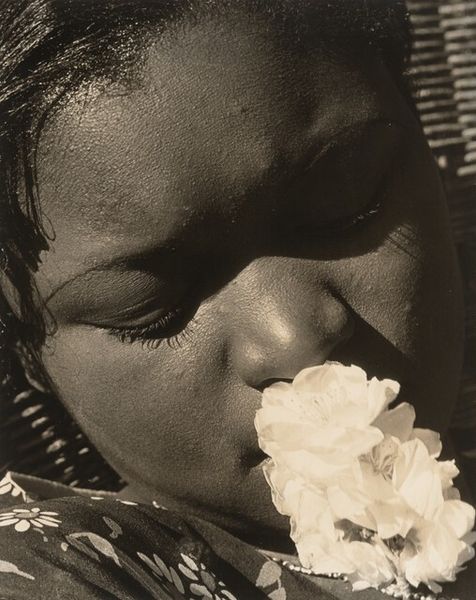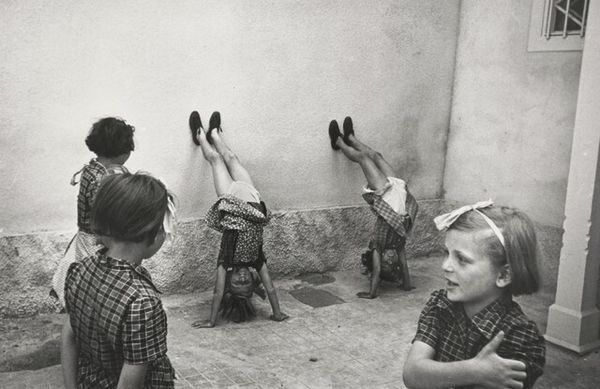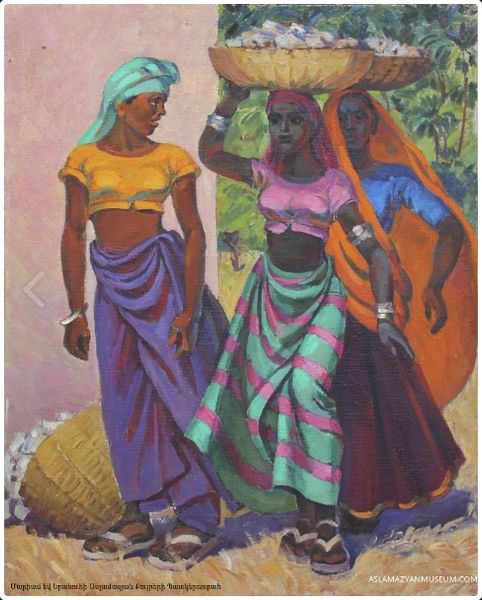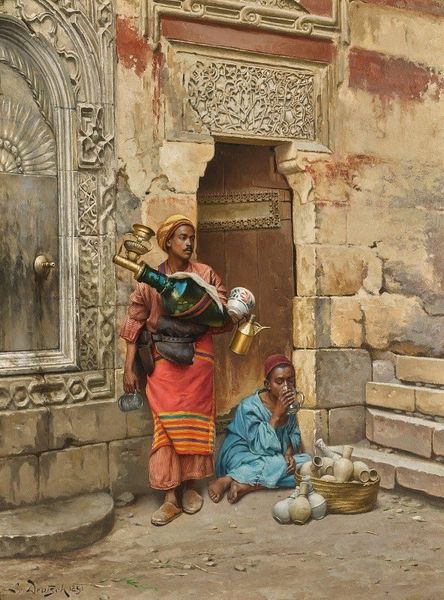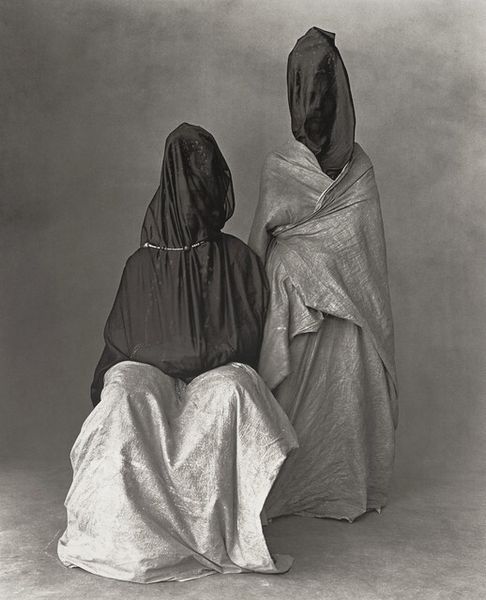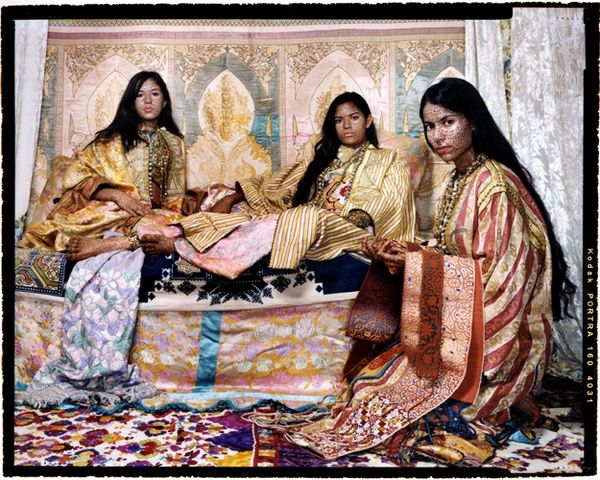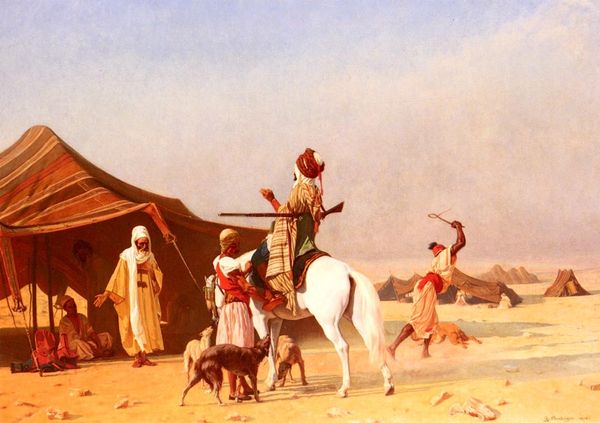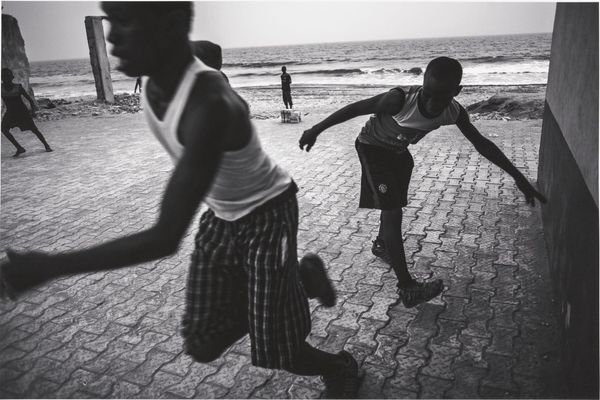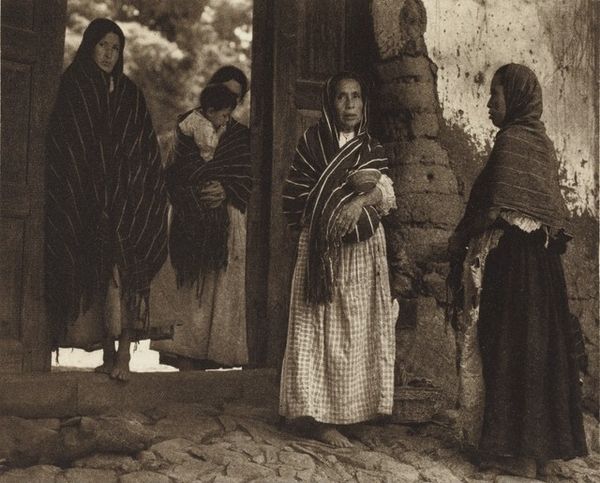
photography
#
portrait
#
asian-art
#
landscape
#
street-photography
#
photography
Dimensions: image: 53.9 × 35.7 cm (21 1/4 × 14 1/16 in.) sheet: 60.9 × 50.4 cm (24 × 19 13/16 in.)
Copyright: National Gallery of Art: CC0 1.0
Editor: This is Steve McCurry’s "Dust Storm, Rajasthan, India," possibly taken between 1983 and 2016. It’s a photograph, and it evokes a real sense of community in a harsh environment. There's a group of women clustered together. What do you see in this piece, looking at it from a historical perspective? Curator: From a historical standpoint, it makes me consider the socio-political role photography has played in representing cultures, particularly in post-colonial contexts like India. McCurry's work, while visually striking, often comes under scrutiny regarding the Western gaze and potential exoticism. Are we looking at a representation of authentic lived experience, or a carefully constructed image catering to Western expectations? Editor: That’s a great point. I hadn't really thought about the idea of a ‘constructed image’ versus ‘authentic experience’. The women are wearing beautiful red garments, but they seem to be caught in the middle of this really gritty dust storm. Curator: Exactly. And that juxtaposition is powerful. The bright colors against the muted landscape, the apparent fragility of human life against the force of nature. It highlights both the vulnerability and resilience of communities facing environmental challenges. Considering that McCurry is associated with photojournalism, where do you see this photograph fitting into broader socio-political conversations about environmental impact and cultural identity? Editor: It makes you wonder about the ethical considerations that come into play when an artist captures something like this. What responsibility does he have to these women? Curator: Precisely. These images circulate and shape public understanding and, perhaps, misunderstanding. Considering the institutional power dynamics at play here adds a deeper dimension to the beauty and the initial impression. Editor: This photo seemed straightforward initially, but I hadn’t thought about how its meaning changes depending on the photographer's position and the viewer's perspective. Thank you! Curator: My pleasure. It reminds us that art is always engaging with broader social and political forces, even when that’s not immediately apparent.
Comments
mm over 1 year ago
⋮
There are scenes described when funerals take place and wailing women/transvestites arrive to lament the departed
Join the conversation
Join millions of artists and users on Artera today and experience the ultimate creative platform.
mm over 1 year ago
⋮
I can’t remember exactly but they revolve around scenes when the women arrive to lament at funerals
mm over 1 year ago
⋮
Very evocative ; makes me think of our trip to Rajasthan and passages in A suitable boy by Vikram Seth
